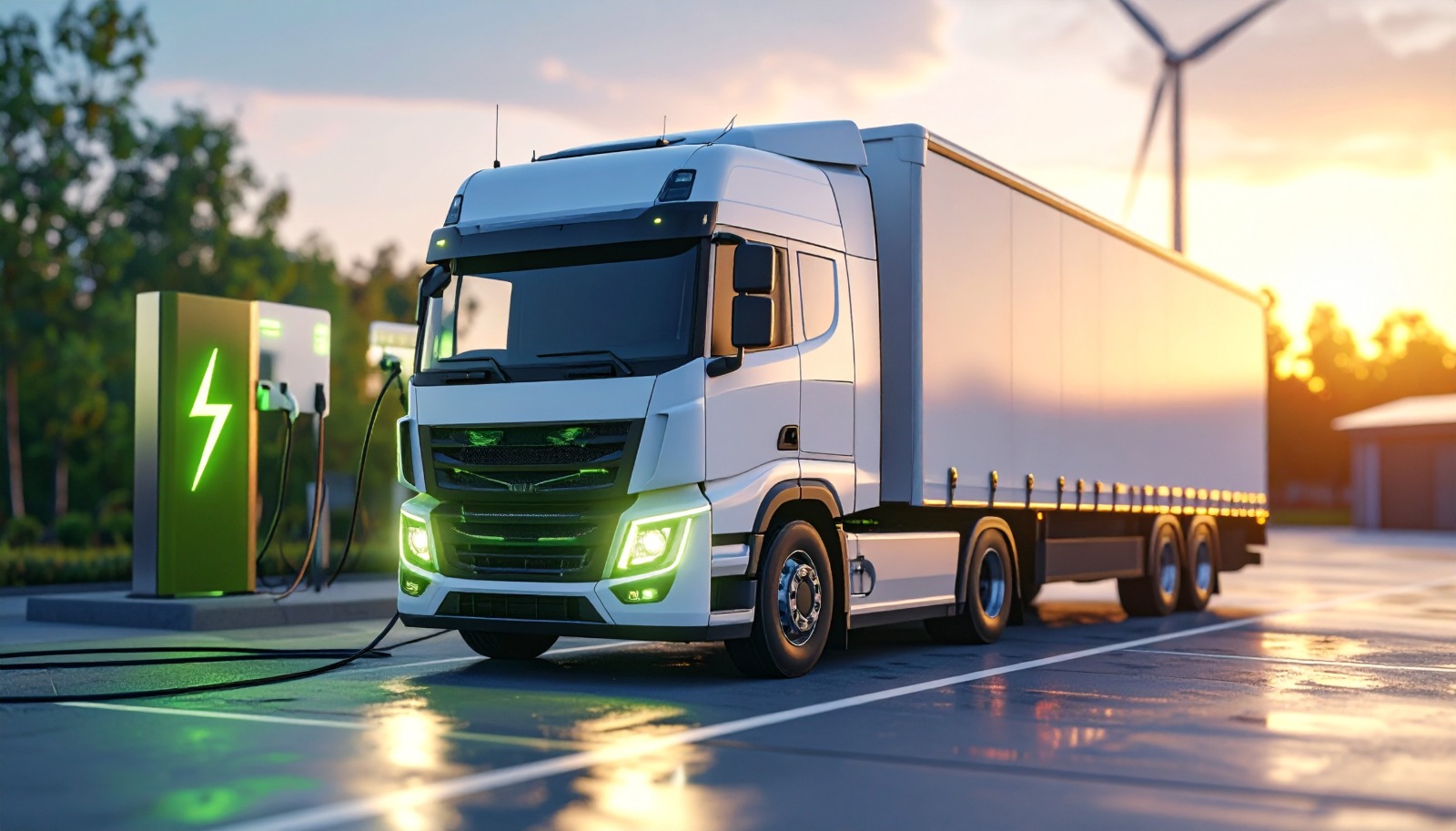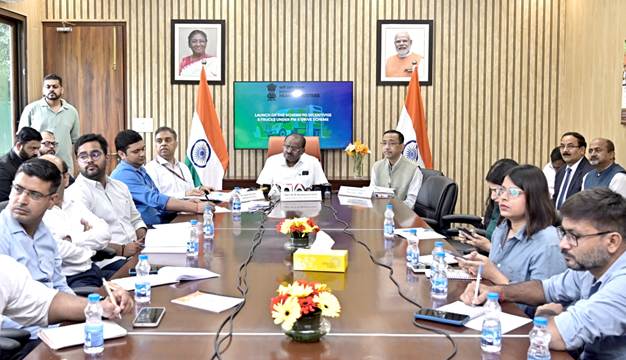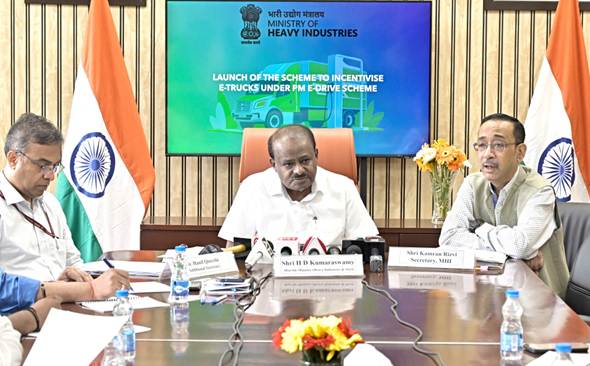In a push towards sustainable freight transport, the government on Friday launched its first-ever electric truck (e-truck) incentive scheme under the PM E-DRIVE initiative, marking a significant step in Prime Minister Narendra Modi’s green mobility vision.
Announced by Union Minister for Heavy Industries & Steel, H.D. Kumaraswamy, the scheme offers financial incentives for N2 and N3 category electric trucks, aiming to reduce emissions and promote cleaner transport alternatives. While diesel trucks account for just 3% of vehicles, they contribute a staggering 42% of transport-related greenhouse gas emissions, making this shift crucial for India’s environmental goals.
Under the scheme, electric trucks with gross vehicle weight (GVW) ranging from 3.5 tonnes to 55 tonnes will be eligible for incentives. The maximum subsidy is set at Rs 9.6 lakh per vehicle, provided as an upfront discount and reimbursed to manufacturers via the PM E-DRIVE portal on a first-come, first-served basis.
The initiative includes strict warranty guidelines to ensure reliability: five years or 5 lakh km for batteries, and five years or 2.5 lakh km for vehicles and motors. A mandatory requirement for scrapping old, polluting trucks adds to the scheme’s environmental impact.
With an estimated deployment of 5,600 e-trucks, including 1,100 in Delhi alone under a Rs 100 crore allocation, the scheme targets key sectors like cement, steel, ports, and logistics. Leading manufacturers such as Tata Motors, Ashok Leyland, and Volvo Eicher are already active in the space, boosting domestic capabilities under the Atmanirbhar Bharat vision.
In a strong signal of CPSE leadership, SAIL has committed to procuring 150 e-trucks and aims to make 15% of its hired fleet electric.
The scheme is expected to lower logistics costs, reduce carbon emissions, and significantly improve air quality, aligning with India’s net-zero emissions target by 2070 and the vision of a Viksit Bharat by 2047.
















